
EFL · National City (Danish)
The Chapter of base
- Element of National

Landmark building(Church of the Savior)
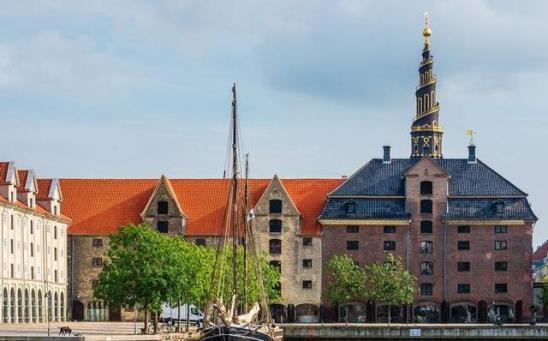
The Kingdom of Denmark (Kongeriget Danmark)
[Area] 43,096 sq km (excluding Greenland and the Faroe Islands).
[Population] 5.825 million people (September 2020), about 86% of whom are Danish. The official language is Danish. About 74% of the residents are Lutherans and 0.6% are Roman Catholic.
[Capital] Copenhagen (Benhavn), population 790,000 (September 2020).
Queen Margrethe II, who ascended the throne on 14 January 1972.
Queen Margrethe II's birthday: April 16. Constitution Day: June 5, commemorating the promulgation of the Constitution of the Kingdom of Denmark on June 5, 1849.
[Currency] Danish Krone (Krone), 1 Krone =100 euros (Øre). One dollar is about 6.4 Danish kroner. (September 2020)
It is located in the north of Europe. South with Germany, west of the North Sea, north and Norway, Sweden across the sea. The coastline is 7,314 kilometers long. It is low and flat with an average elevation of about 30 meters. Is a temperate Marine climate. The average temperature in January -2.4℃, August 14.6℃. The average annual precipitation is about 860 mm.
Political situation is stable on the whole. In June 2019, the Danish Social Democratic Party formed a one-party minority government with the support of the Social People's Party, the Red-Green Coalition and the Radical Party. Its main policy priorities include green, welfare and immigration. These include reducing emissions by 70% from 1990 levels by 2030 and becoming carbon neutral by 2050; Improve national welfare, protect the rights and interests of vulnerable groups, increase financial support to local governments to cope with aging; We will take a middle way in dealing with difficulties and migrants, and build a new, fair and humane asylum mechanism for refugees.
The current Constitution was formulated in 1849 and amended four times in 1866, 1915, 1920 and 1953. The constitution states that Denmark is a constitutional monarchy. With the approval of a five-sixth majority in parliament, the government could cede certain areas of sovereignty to some kind of "international body".
Parliament A unicameral system with 179 seats. Members are elected by popular vote for four-year terms. This session of parliament in June 2019 after the election, the SPD (48), the liberal party (42), Dan party (16), radical party (16), social party (14), red and green alliance (13), the conservatives (13), XuanZeDang (5), the new Tory (4), the liberty alliance (four). In addition, Greenland and the Faroe Islands had two seats each. Speaker Henrik Dam Kristensen (SPD).
【 Government 】 In June 2019, the Social Democratic Party of Denmark formed a one-party minority government with the support of the Social People's Party, the Red-Green Coalition and the Radical Party. The 20-member cabinet is led by Prime Minister Mette Frederiksen, Finance Minister Nicolai Wammen and Foreign Minister Jeppe Kofod.
On January 1, 2007, Dan implemented a new administrative division. The country has five major regions, 98 cities and Greenland, Faroe Islands two self-governing territories.
The court is divided into three levels. There are 1 Supreme Court, 2 National Courts and 82 District Courts. In addition, there are specialized courts such as maritime and commercial courts and special courts of action. The Supreme Court consists of a President and 18 judges, who are recommended by the Government (the Secretary of State for Justice) and appointed by the Queen and serve until retirement. The court exercises its powers independently. President of the Supreme Court Thomas R? Rdam. The procuratorial organ is subordinate to the Ministry of Justice and consists of a general procurator and three state prosecutors. Attorney General Jan Reckendorff. The Parliamentary Ombudsman Niels Fenger.
[Source] Lack of natural resources. There are few mineral deposits other than oil and gas. The proved remaining recoverable oil reserves are 1.16 billion barrels, ranking 38th in the world. The proved remaining recoverable reserves of natural gas are 101 billion cubic meters, ranking 54th in the world. Proven reserves of lignite are 90 million cubic meters. The forest covers an area of 486,000 hectares, with a coverage rate of 11.4%. The North Sea and the Baltic Sea are important offshore fishing grounds.
[Economy] Denmark is an open small country with developed industry and agriculture. Due to its small land area and lack of raw materials and resources, its economy relies largely on trade with other countries. Denmark has maintained a surplus in foreign trade for many years, mainly due to the surplus in service trade. In 2019, Denmark's economy grew by 2.4%, inflation and unemployment remained low, and per capita income remained among the highest in the EU.
The Danish economy and GDP per capita, 2015-2019

Source: Statistics Denmark
Industry occupies an important position in the national economy, but in recent years, its proportion in the national economy is gradually declining, and the total industrial output value accounts for about 14% of the GDP. The main industrial sectors are: food processing, machinery manufacturing, oil exploitation, shipbuilding, cement, electronics, chemical industry, metallurgy, medicine, textiles, furniture, tobacco, paper making and printing equipment. More than 60% of the products for export, accounting for about 70% of the total export. Marine main engine, cement equipment, hearing AIDS, enzyme preparation and artificial insulin and other products are world-renowned. Enterprises are mainly small and medium-sized.
Agriculture: Agriculture and animal husbandry are highly developed. In recent years, under the influence of the European Union Common Agricultural Policy, the share of agriculture in the national economy has been declining year by year, but it still accounts for a large proportion in foreign trade. The total output value of agriculture and animal husbandry accounts for about 1 percent of the GDP, with 28,000 square kilometers of arable land and 42,000 farms. Agricultural science and technology level and productivity ranks among the world's advanced countries. In addition to the domestic market, most of the agricultural and livestock products are exported, accounting for 20% of the total export volume. Pork, cheese and butter exports rank among the top in the world. It is one of the world's largest mink producers, with an annual output of about 12 million pieces.
Foreign trade is the lifeblood of economy. Main raw materials rely on import, product sales rely on the international market. The government made preferential policies to encourage the export of products. China has trade relations with more than 100 countries and regions, and has maintained a large surplus since 1987. The main imports are transportation equipment, telecommunications products, paper, crude oil, coal, steel, machinery and feed. The main export products are dairy products, meat, fish, furniture, medicine, electronic products, instruments, ships, textiles and clothing. The total volume of imports and exports in 2019 was about 220 billion US dollars, up 2.3% year on year.
As a member of the EU, Denmark adheres to the EU's preferential trading arrangements.
[Trade in Goods] Since 1987, Denmark's trade in goods with foreign countries has changed the situation of continuous deficit, and has maintained a trade surplus for 33 consecutive years until 2019. According to Statistics Denmark, the total volume of Denmark's imports and exports of goods in 2019 was DKr 1,379.81 billion, about US $206.87 billion, an increase of 4% over the previous year (the same below). Among them, exports amounted to DKr 732.83 billion, or about US $109.87 billion, up 6.9%; Imports were 646.98 billion Danish kroner, or $97 billion, up 0.9 percent. The trade surplus was 85.85 billion DKr, or about 12.87 billion US dollars, 94.4% larger than the same period last year.
[Trade in services] In 2019, Denmark's total imports and exports in services amounted to DKr 972.86 billion, or about US $145.85 billion, an increase of 3.1%. Among them, exports amounted to 498.28 billion Danish kroner, or about 74.7 billion US dollars, up 0.7%; Imports of DKr 474.58 billion, or $71.15 billion, increased by 5.7%. The surplus in services was 23.7 billion Danish kroner, or $3.55 billion, 48% lower than a year earlier.
Germany is Denmark's largest trading partner. In 2019, Denmark's exports to EU countries accounted for 57.5% of Denmark's total exports, down 0.9 percentage points from the previous year. Imports from EU countries accounted for 70.7% of Denmark's total imports, an increase of 0.1 percentage points over the previous year. Exports to Germany, Sweden, the United States and Norway accounted for 14.2%, 10.6%, 10.4% and 6.3% of Denmark's total exports respectively. Exports to the United States increased by 34.5%, while those to Germany decreased by 3.2%. Imports from Germany, Sweden, the Netherlands and China accounted for 21.8%, 12.1%, 7.9% and 7.5% of Denmark's total imports, respectively. Imports from Germany decreased by 3.1%, while those from Sweden, the Netherlands and China increased by 2.9%, 2.4% and 2.7%, respectively. The top three sources of Denmark's trade surplus are the United States, the United Kingdom and Norway. In 2019, Denmark's surplus with these three countries is US $7.95 billion, US $3.05 billion and US $2.83 billion respectively. Among them, the surplus with the United States and Norway increases by 41.6% and 75.1% respectively, while the surplus with the United Kingdom decreases by 12.7%. The trade deficit was mainly accounted for by Germany, the Netherlands and China, which were $5.54 billion respectively in 2019,
US $2.03 billion and US $1.86 billion, the deficit with the three countries narrowed by 2.8%, 25.5 percent and 34.3 percent, respectively. In 2019, China was Denmark's fourth largest source of imports and seventh largest export destination.
Denmark's top 5 trading partners in goods trade in 2019
(Unit: millions of US dollars)


Source: Statistics Denmark
Denmark's Top 5 Trading Partners in Services in 2019
(Unit: millions of US dollars)
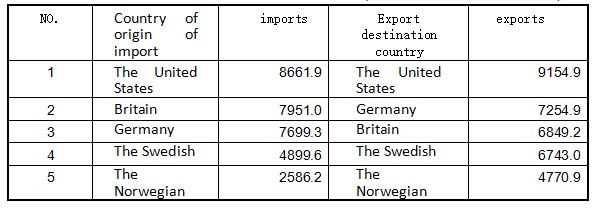
Source: Statistics Denmark
[Commodity Structure] Denmark's main exports are machinery and transport equipment, chemical products, food and live animals, and miscellaneous products. The main imports are machinery and transport equipment, miscellaneous products, and manufactured goods, mainly by raw materials. The proportion and growth rate of major import and export commodities in 2019 are as follows:
The top 5 imports from Denmark in 2019
(Unit: millions of US dollars)

Source: Statistics Denmark
The top 5 Danish exports in 2019
(Unit: millions of US dollars)
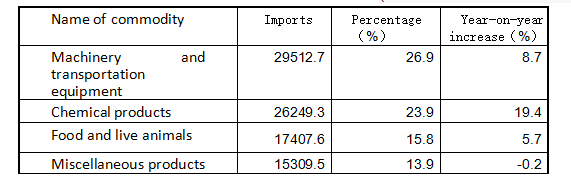

Danish culture is one of the western cultures. It has achieved a great deal in art and is closely related to Danish society and daily life. Humility, punctuality and social equality are an important part of Danish culture.
In Denmark, trying to distinguish one person from the rest can provoke hostility, violating the rigid Jandje code that has become almost an unofficial code in Scandinavia. The Danish government provides a large amount of funding for cultural and artistic creation, many of which are managed by local governments, so Danish citizens are directly involved. Denmark has a rich cultural and intellectual heritage. Science is tycho brahe, Ludwig a. KeDing, niels Bohr, literature, Hans Christian Andersen, sauron, Mr Berlusconi, soren fruit, Karen Bai Liesen (pen name her denison), Ludwig's hall, henrik peng Mr Topi, leather, sea er Dan, Herman bang, music have Carl Nielsen, Films by directors such as Karl Theodor Dreyer and Lars von Trier are also internationally known.
The capital of Denmark also has many classics and attractions, such as the Tivoli Park, the Amarimborg Palace, the Christian Chynberg Palace, the Church of Our Lady, the Rosenberg Palace, the Copenhagen Opera House, the Frederick Church, the Thorvalsen Museum, the Round Tower and the Mermaid Statue.
Danish traditional dress
Danes, mainly living in Denmark, accounting for 96.8% of the country's population, their period of distribution in Sweden, Norway, Germany,
The United States and Canada. Denmark lived in the early years of the Anglo-Saxons, after migration, fusion, in the 10th ~ 11th century AD to form a unified Danish nation.
Most of the traditional costumes in Denmark have elegant embroidery, especially on white or natural linen with web embroidery.
Women's blouses, bonnets, headdresses, shawls are all embroidered. Women usually wear dirty - resistant dark skirts, skirts with an apron over the waist. Festive costumes are delicate dresses with pleats. If it is not a dress, then young girls like pink shirts and older women like green shirts. Some still in the cuff. On decorated with ribbon knot.
The traditional dress of Danish men is similar to that of other Nordic nations. In the process of perfection, the traditional costumes of western nationalities all inherit the folk culture of their own nationalities. Therefore, they are distinctive and reflect the local customs and practices of their own nationalities. So far, they are still loved by all nationalities.
Literature and Art
Perhaps the most famous Dane was the master of fairy tales Hans Christian Andersen, best known for such works as The Sea Daughter, The King's New Clothes and The Ugly Duckling. One of the most famous sculptures, the "mermaid", has been standing quietly by the sea in memory of the master. Other famous Danes are:
The philosopher S&Oslgaard; Ren Kierkegaard, physicist Niels Boyle, and his student Werner Heisenberg founded the famous school of quantum mechanics known as the Copenhagen School.
A total of 13 Danes have won the Nobel Prize. It is a world leader in biology, environment, meteorology, immunology and so on. Pursuant to the cultural policy of enabling every member of society to enjoy equal cultural development, encourage local cultural development.
In 2003, there were 5,178 public libraries and 271 museums of various kinds, with 961,500 visitors. The former palace of the Danish royal family, Fredericksburg, is now the National History Museum.
The Danes love to read. Fairy tale writer Hans Christian Andersen's literary works reached the pinnacle of world literature, and Denmark is known as the "Kingdom of Fairy Tales". Since 1975, the International Fairy Tale Film Festival has been held every two years in Andersen's hometown Odense. The Chinese animated film "Flute" won the third Gold Medal in 1979.
Carl Theodor Dreyer is a Danish film master and one of the founders of Danish art cinema. Dreyer influenced many subsequent directors, including some of the great masters of film, such as Robert Bresson, Lars von Trier, Theo Angelopoulos, and so on. Dreyer made one of his most remarkable films, "Days of Wrath", a 17th-century case of witchcraft that is both breath-taking and profoundly instructive. In 1955, he made the film "The Promise," for which he won the Venice International Film Festival Award.
Karen Brisson is a famous female novelist in the 20th century. She lived in Africa for 20 years and her works have been widely disseminated in the world. The film Out of Africa (1985) was based on his memoirs.
Denmark is famous for its ballet art and the Royal Danish Ballet regularly Tours the world.
Danish silverware design is also quite famous, such as George Jensen is a classic silverware artist.
[Famous Company]
A.P.Moller-Maersk Group (A.P.Moller-Maersk Group) : Founded in 1904. The world's largest container shipping company, headquartered in Copenhagen. Also engaged in oil and gas exploration and development, air transportation, commodity retail, etc. In 1984, Maersk (China) Shipping Co., Ltd. was the first foreign shipping company approved to set up an office in China, and now it is the largest foreign shipping company in China.
Novo Nordisk Group (Novo Nordisk) is the world's leading pharmaceutical and biochemical company. In 2000, Novo Nordisk decided to split its two core businesses, keeping its pharmaceuticals business under its original name and rebranding its enzyme business as Novozymes. Insulin produced by Novo Nordisk and enzymes produced by Novozymes account for more than 50% and 40% of the world market, respectively. Headquartered in Copenhagen, the company has production plants in Europe, America and Asia. The products were introduced into the Chinese market in the 1960s.
Danfoss Group (Danfoss) : Founded in 1933, Danfoss is the largest industrial group in Denmark. It is a world leader in refrigeration, heating, water treatment and transmission control manufacturing. Its products focus on environmental protection, energy saving and efficiency improvement. Danfoss (Tianjin) Co., Ltd. was established in 1995 and is its largest production base in Asia.
- hot news
(1) Denmark wants to strengthen food trade and economic cooperation with China
http://www.xinhuanet.com/food/2018-09/25/c_1123476834.htm
(2) communication: Danish pig production enterprises look forward to ride all the way "area" express https://baijiahao.baidu.com/s?id=1600065510963894888&wfr=spider&for=pc
(3) providing the Danish origin ingredients Ding dong shopping power origin diversification strategy
http://www.cnr.cn/shanghai/tt/20200609/t20200609_525122496.shtml
- the Danish environmental and food minister's visit to promote bilateral cooperation fields relats
http://finance.sina.com.cn/roll/2018-09-20/doc-ihkhfqnt1873364.shtml
- Country · Human Geography
The Kingdom of Denmark (Kongeriget Danmark; The Kingdom of Denmark, or Denmark for short, is one of The five Nordic countries. It is a constitutional monarchy with two self-governing territories, The Faroe Islands and Greenland. The north is across the North Sea and the Baltic Sea with Sweden and Norway, and together with them as the Scandinavian countries, the south is bordered by Germany, the capital and the first city is Copenhagen. The first national flag in the world was the flag of Denmark, which was created in 1219. It is called "Danish Power". [1]
About A.D. 985 formed a unified kingdom of Denmark, 8-12 centuries into the Viking era of the heyday of Viking. [1] In the 14th century, it became one of the great powers in Europe. In June 1397, under the leadership of Queen Margaret I, it formed the Kalmar Alliance with Sweden and Norway and became the leader of the alliance. In 1523 Sweden became independent from the Confederation. In 1524, Denmark and Norway formed the United Kingdom of Denmark and Norway. [1] Norway was ceded to Sweden by the Treaty of Kiel in 1814. A constitutional monarchy was established in 1849. [1]
Denmark is a highly developed capitalist country, a founding member of NATO and a member of the European Union [2]. Denmark has a very perfect social welfare system, highly developed economy, the gap between the rich and the poor is very small, the citizens enjoy a very high quality of life. In February 2019, the 2018 World Happiness Index was released, and Denmark ranked third. [3] (Source: Baidu Baike)
(1) Denmark is a charming fairy tale kingdom, walk into Denmark to have a look! https://haokan.baidu.com/v?vid=15604645611079513207&pd=bjh&fr=bjhauthor&type=video
(2) The Kingdom of Denmark (the happiest country in the world) https://v.youku.com/v_show/id_XNDMyNDU5MDI4OA==.html
- Denmark "black sun at World migratory bird day
https://haokan.baidu.com/v?vid=18327412431826937148&pd=bjh&fr=bjhauthor&type=video
(4) [food] Danish food brand Nature 's Path animation advertising https://v.qq.com/x/page/r017348467s.html
- The latest information (about 10 pieces)
(1) Denmark: the safest food country in the world
http://www.360doc.com/content/18/0116/13/48675520_722379302.shtml
(2) the Danish food with what safety https://www.zhangqiaokeyan.com/academic-journal-cn_old-world_thesis/0201279197025.html
(3) Denmark's global food safety standards
https://www.meipian.cn/und6f42
(4) Denmark into global food the safest countries were the most rigorous safety standards at http://blog.sina.com.cn/s/blog_69aa5e7501017coj.html
(5) Danish government's supervision of food safety
http://www.cnki.com.cn/Article/CJFDTotal-SHZL200602013.htm
(6) Denmark to revise food safety and hygiene standards http://www.clii.com.cn/cyaq/202007/t20200724_3945606.html
(7) Danish government's supervision of food safety
https://wenku.baidu.com/view/720d45abb80d4a7302768e9951e79b896902686f.html
(8) Denmark's experience in food safety management
https://wenku.baidu.com/view/1ded456810661ed9ac51f324.html
(9) Foreign food safety issues, the food of the Kingdom of Denmark as an example
https://wenku.baidu.com/view/b73238d7960590c69ec3768f.html
(10) Impression of food safety investigation in Denmark
https://xueshu.baidu.com/usercenter/paper/show?paperid=dfb18e260ed1e47b5fb063b80d62bf00&site=xueshu_se
- Frame section: introduction of country and food
[Agriculture] Denmark's agriculture has a long history and occupies an important position in the national economy. Denmark has a flat terrain, sufficient arable land, a climate suitable for agriculture, and relatively uniform precipitation throughout the year, all of which provide good natural geographical conditions for the development of agriculture. Denmark has a high level of agricultural mechanization, high crop yield per unit area, and the level of agricultural science and technology and production efficiency are among the top in the world. Denmark is an important supplier of dairy products and meat to European countries. The annual export of dairy products is about 2.6 billion US dollars. Denmark is the world's major producer and exporter of mink, with an annual export value of about $700 million. It is the center of the global fur trade and has the largest fur auction house in the world. Denmark is also the world's leading producer and exporter of forage seeds, with annual exports of about $300 million. Denmark is the world's leading exporter of pork, producing about 30 million head a year. Nearly 90 percent of the meat is exported. Exports account for about 20 percent of Denmark's agricultural exports.
[Fishery] Denmark has a vast coastline and a sea area at the intersection of cold and warm currents. Its fishing industry is developed. It is one of the top ten fishing countries in the world and the largest fishing country in the European Union, accounting for about one third of the total catch of the European Union. The main types of fish in Denmark are cod, flounder, herring, mackerel, shrimp and shellfish. Annual exports of fish products are currently $3.5 billion.
- Frame: Food Standards [State Administration for Market Regulation]
Danish global food safety standards
https://www.meipian.cn/und6f42
Denmark into global food the safest countries were the most rigorous safety standards at http://news.sohu.com/20121225/n361449094.shtml
- Framework: Policies and regulations [State Administration for Market Regulation]
Danish food regulation law system at https://wenku.baidu.com/view/dca2908114fc700abb68a98271fe910ef02dae4d.html
Denmark's food safety supervision system
https://www.docin.com/p-1162540742.html
- Frame section: exhibition (food)
(1) Denmark International Food Show
http://www.yshows.cn/zhanhui/442.shtml
The basic information
Name (English) : Rehmed-Plus, Denmark International Food Show 2021
Name (English) : Rehmed - Plus
Exhibition Date: March 21, 2021 - March 23, 2021
Venue: Copenhagen, Denmark
Exhibition cycle: once a year
Organized by Messecenter Herning
Organizer: Beijing Zhongling International Exhibition Co., Ltd
Industry attributes
Food, beverage, liquor, tobacco, hotel, catering, store, accessories, food processing and packaging industry
Exhibits range
Baking equipment, baking machinery, beverage production, catering, cleaning technology, confectionery equipment, equipment, food processing machinery, food processing technology, food stuff, industrial cooking equipment, shop equipment
The exhibition to introduce
The Danish Food Expo (Wholesale and Retail Grocery Trade Fair) was started in 1986 and is held every two years in Haining, Denmark. FoodExpo is an important event for food retail and wholesale trade in Denmark. In March 2014, a total of 420 exhibitors participated and 24,243 visitors were attracted.
The market background
Denmark, located in the north of Europe, is one of the four Nordic countries (Sweden, Norway, Denmark and Finland) with high welfare. Andersen's fairy tale is a brilliant pearl in the world's cultural treasure house. Therefore, Denmark is also known as the land of fairy tales. Denmark has a land area of 43, 000 square kilometers and a population of 5.25 million. Its per capita national income ranked fifth in the world in 1996. Since 1993, Denmark's economic growth has been maintained at 2.5 to 3 per cent, showing a steady growth trend. The unemployment rate has been falling year after year, from 12.25 per cent in 1993 to 8 per cent in 1997. Thanks to steady economic growth, the ratio of the Danish krone to the Deutschmark, Europe's main currency, has remained at a stable level since 1987. The Danish business community has established a good cooperative relationship with China.
(2) the Denmark international Food expo Food Fair at http://www.yshows.cn/zhanhui/2289.shtml
The basic information
Name (English) : Copenhagen Food Fair 2021
Name (English) : Copenhagen Food Fair
Exhibition Date: August 20, 2021 - August 29, 2021
Venue: Copenhagen, Denmark
Exhibition cycle: once every two years
Sponsor: Bella Center A/S
Organizer: Beijing Zhongling International Exhibition Co., Ltd
Industry attributes
Food, beverage, alcohol, tobacco
Exhibits range
Beverage, catering, food things, hotel equipment, catering equipment, shop equipment
The exhibition to introduce
The Copenhagen Food Fair has been held since 1971. It is held every two years in Bella Center in Copenhagen, the capital of Denmark. Copenhagen Food Fair is an important exhibition in the field of Danish Food.
The market background
As one of China's three major trade markets, Europe has always been a place for suppliers to contend for. Although the financial crisis made the European economy suffered a heavy blow, it did not shake its important position in the pattern of China's foreign trade. China is the largest source of textiles and raw materials imported by the 27 EU countries, accounting for 41.1 percent of the total value of EU imports. Although Denmark is a small country in Northern Europe, it is a big trader of textiles and clothing in Northern Europe. Denmark advocates free trade and has developed entrepot trade. Under the new situation of global textile trade integration, Denmark has become a good window to enter or expand the market in Northern Europe.
- food categories (list several representative foods)
Dairy products in general:
Denmark is a traditional agricultural producer, especially developed animal husbandry, mainly raising pigs, cattle, furs and poultry. Denmark has an area of about 43,000 square kilometers, and the arable area accounts for 63% of the land area, about 2.7 million hectares, and the population is about 5.23 million. Only 4%, that is, 200,000 people are engaged in agricultural production, but the output of Danish agriculture can support 15 million people. Therefore, two thirds of Danish agricultural products are exported. In 1999, livestock exports amounted to 49.6 billion kroner ($6.2 billion), of which dairy exports amounted to 11.7 billion kroner ($1.5 billion). It can be seen that Danish agriculture and animal husbandry play an extremely important role in Denmark's national economy and foreign trade.
Dairy products developed
The development of cattle industry has correspondingly led to the development of dairy industry. Denmark's first dairy plant was set up in 1882 and by the 1940s there were about 1,700 dairy plants. With the continuous improvement of production and technology, the industry has expanded gradually, the competition is intense, but the Danish dairy products in the international market share continue to improve, the Danish dairy industry gradually from the cottage industry of small processing plants to the scale of the cooperative form transition, now has developed into a political integration of production and sales of large enterprises, to 98, The number of Danish dairy factories was reduced to 90. One of the largest co-operative companies is MD Foods, one of the top 10 dairy companies in Europe, with 39 processing plants that produce 72% of Denmark's dairy products. The company provides fresh milk from 8,200 farms, employs 13,200 people and has an annual turnover of more than 23.8 billion kroner ($3.73 billion).
Exports to China:
International marketing accounted for 64%. On April 7, 2000, Denmark's MD Foods merged with Sweden's Arla Dairy Cooperative to become the largest dairy company in Europe, with about 17,000 farmer members
- Frame section: brand recommendation
Well-known dairy brands:
Arla Foods, Vechtenaer, DAI, Semperallomin,
- enterprise recommendation
Famous Dairy Companies:
Arla Foods
Arla Foods is a Danish dairy company and one of the best cheesemakers in the world, with operations worldwide. The company is known for its exquisite cheeses, which are sold all over the world. The company consumed 14.2 million tons of milk in 2016, with a turnover of $10.5 billion. Scandinavia is its largest producer of dairy products. The company was formed in 2000 by the merger of the Swedish dairy co-operative and the Danish dairy company MD Foods.
- Professional data
12.national and food data
(1) two-way trade between China and Denmark panorama (with China and Denmark's main import and export industry data) https://wenku.baidu.com/view/863aac324b649b6648d7c1c708a1284ac95005f0.html
(2) The value and contribution of Danish agriculture and food in China - Stateofgreen
https://wenku.baidu.com/view/890be1a081eb6294dd88d0d233d4b14e85243edc.html
(3) three progressive exposition, Denmark and China https://baijiahao.baidu.com/s?id=1682683243706160632&wfr=spider&for=pc
cooperation in the field of agriculture and food
(4) the Danish environment and food minister: we are willing to create a sustainable ecological environment with Chinese https://baijiahao.baidu.com/s?id=1612195553477505821&wfr=spider&for=pc
(5) (international trade) the Danish ministry of foreign trade and exports to China of https://wenku.baidu.com/view/56d44286fb0f76c66137ee06eff9aef8941e4826.html
(6) national and food data
1 to 2, 2020 Danish surge
http://finance.sina.com.cn/roll/2020-04-10/doc-iirczymi5609666.shtml
- Chinese Embassy and Consulate in Denmark
Embassy to the Kingdom of Denmark
Ambassador: Feng Tie
Address: Oeregarrds Alle 25,2900 Hellerup, Copenhagen, Denmark
Country code: 0045
Telephone:
Duty Room: 39460889, 39460890, 39625484 (Fax)
Consular Office: 39460877,39460878 (Fax)
Office: 39460875,39625484 (Fax)
Department of Culture: 39460879,39460880 (Fax)
Military attache's office: 39460883,39460884 (fax)
Economic and Commercial Office: 39611013,39612913 (fax)
Website: http://www.chinaembassy.dk
http://dk.china-embassy.org
http://dk.chineseembassy.org
- mail: mail@chinaembassy.dk
- Danish Embassy and Consulate in China
Embassy of the Kingdom of Denmark
Royal Danish Embassy
Chancery: 1 East Fifth Street, Sanlitun
Chancery: No.1, Dong Wu Jie, San Li Tun
Telephone number: 85329900
Fax: 85329999
E-mail: bjsamb@um.dk
Website Address: www.kina.um.dk
Consulate General of the Kingdom of Denmark in Chongqing
Royal Danish Consulate General in Chongqing
Chancery: 31 / F, Metropolitan Commercial Building, 68 Zourong Road, Yuzhong District, Chongqing
Chancery: 31F, Metropolitan Tower, 68 Zourong Road, Yuzhong District,Chongqing
Tel: 023-63836008, 63726200
Fax: 023-63725284
Region: Chongqing, Sichuan, Guizhou, Yunnan
District: Chongqing, Sichuan, Guizhou, Yunnan
Consulate General of the Kingdom of Denmark in Guangzhou
Royal Danish Consulate General in Guangzhou
Chancery: Unit 07-12, 14 / F, T1, Xinghuan International Business Center, 13 Qiaoguang West Road, Guangzhou City, Guangdong Province
(Temporary office: Room 1578, China Hotel Commercial Building, 122 Liuhua Road, Guangzhou City, Guangdong Province)
CHANCERY: Unit 07-12, 14F, Lumina T1 Building, XingHuan International Business Center, 13 Qiaoguang Xi Road, Guangzhou, Guangdong Province
(Temporary Office: Suite 1578, China Hotel Office Tower, 122 Liuhua Road, Guangzhou, Guangdong Province)
Telephone: 020-28297300
Fax: 020-86670315
Region: Guangdong, Guangxi, Hainan, Fujian
District: Guangdong, Guangdong, Hainan, Fujian
Consulate General of the Kingdom of Denmark in Shanghai
Royal Danish Consulate General in Shanghai
Chancery: Room 3101, International Trade Center, 2201 Yan 'an West Road, Shanghai
Chancery: Room 3101, Shanghai International Trade Center, 2201 West Yan'an Road, Shanghai
Tel: 021-80250600
Fax: 021-62090878
Region: Shanghai, Zhejiang, Jiangsu, Anhui, Jiangxi
District: Shanghai, Zhejiang, Jiangsu, Anhui, Jiangsu
- Business associations and economic and trade organizations
Appendix 1 Danish Chamber of Commerce
Shipping Association danishshipping.com
Agriculture and Food Council Agricultureand Food.dk
Appendix 2 List of Chinese Chamber of Commerce, Associations and Major Chinese Enterprises in Denmark
(1) Chinese Chamber of Commerce and Associations
CCCD, Chinese Chamber of Commerce in Denmark,
Website: www.cccdk.dk
The ACED, Association of Chinese Experts in Denmark, www.aced.dk
Danish Chinese Association (Den Kinesiske Forening), www.huaren.dk
Dan-China Business Association DCBF.DK
(2) Major Chinese-funded enterprises
COSCO Marine Transportation Nordic Co., Ltd., tel: 0045-45160167 Huawei Danish Company, tel: 0045-70270801
Danana Holdings Co., Ltd. Tel: 0045-87941481
Bogenex Europe Ltd., telephone: 0045-70260806 Air China Denmark Sales Department, telephone: 0045-33149222 Midler Foods Co., Ltd., telephone: 0045-32121888
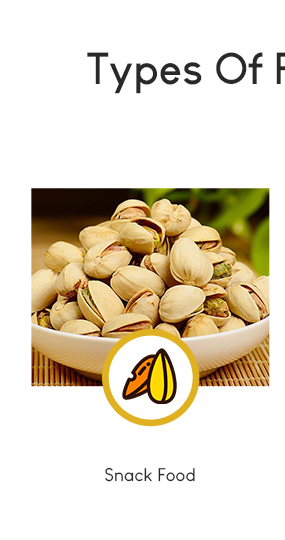 |
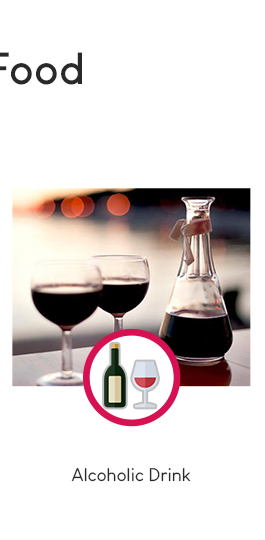 |
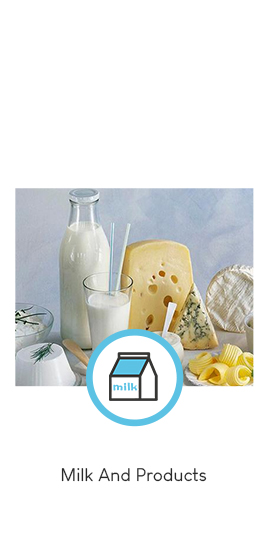 |
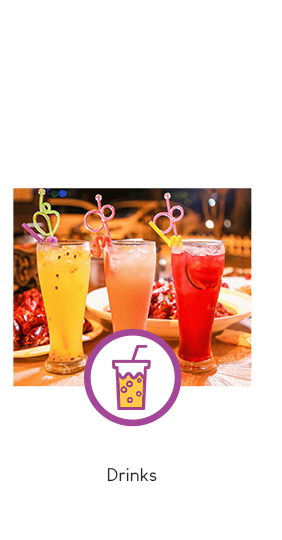 |
||
 |
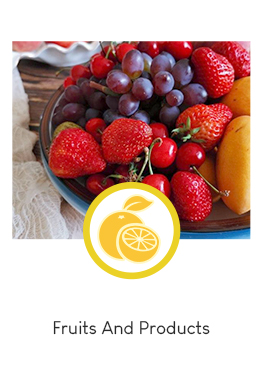 |
 |
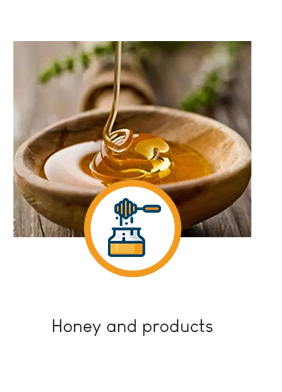 |
||
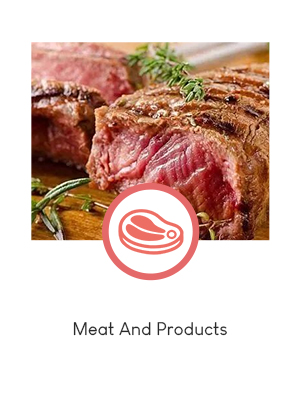 |
 |
 |
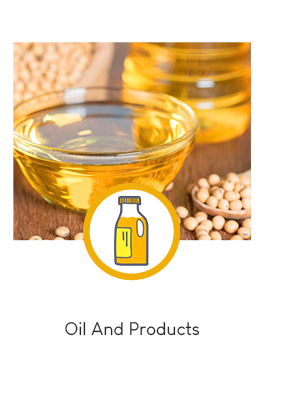 |
||
 |
 |
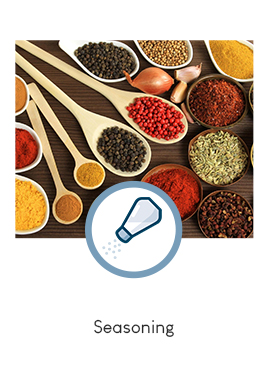 |
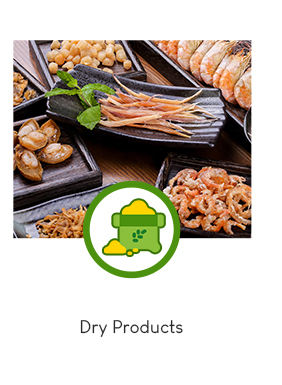 |
||
 |
|||||
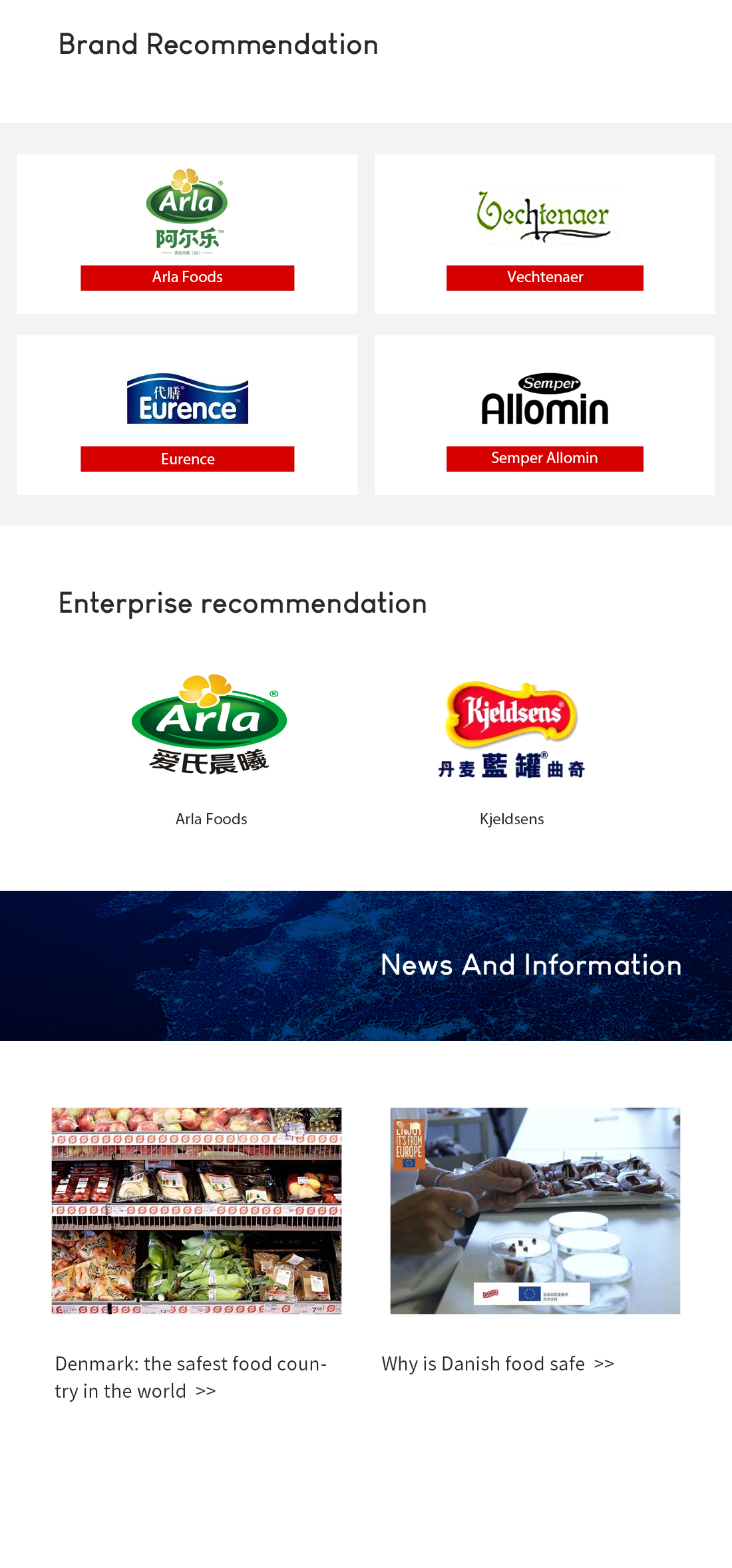
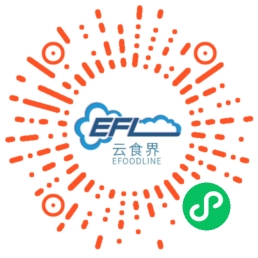 微信小程序
微信小程序



